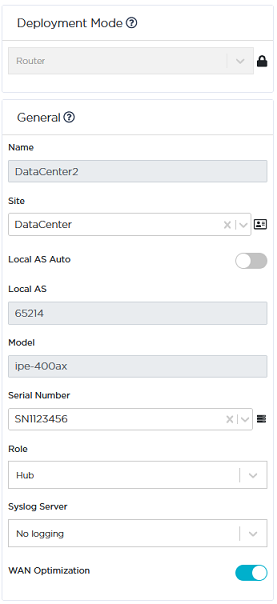Configuring a multi-ip|engine Data Center through iBGP
This section describes how to configure a Data Center with two ip|engines through iBGP. The objectives of this deployment are the following:
|
•
|
high availability: if one hub ip|engine is in bad health, the other ip|engine is used as backup ip|engine |
|
•
|
load balancing: if your network includes many spokes, you may distribute traffic on several hub ip|engines |
|
•
|
transit traffic routing: the two ip|engines are used to interconnect several regional networks |
iBGP peering is possible:
|
•
|
between two or more SD-WAN ip|engines |
|
•
|
when the ip|engines have the same AS number |
|
•
|
when the ip|engines are connected to the same LAN or VLAN |
|
•
|
when the ip|engines are connected to different LANs or VLANs via a Core Router |
The following configuration Use Cases are complementary to both Use Case 1 and Use Case 2.
|
•
|
Use Case 4A and Use Case 4B refer to a multi-ip|engine Data Center configured in Router Mode |
|
•
|
Use Case 4C refers to a multi-ip|engine Data Center configured in Hybrid Mode |
Router Mode
For Use Case 4A and Use Case 4B which are complementary to "Use Case 2", there is one prerequisite which is the necessary configuration of the second hub ip|engine of the Data Center.
|
1
|
Configure the hub ip|engine as follows: |
|
2
|
Check that you use the same Local Autonomous System as for the Data Center first ip|engine: 65214. |
|
3
|
Then configure its LAN to meet Use Case 4A and Use Case 4B requirements as described on the following pages. |
Hybrid Mode
For Use Case 4C which is complementary to "Use Case 1", there is one prerequisite which is the necessary configuration of the second hub ip|engine of the Data Center.
|
1
|
Configure the hub ip|engine as follows: |
|
2
|
Check that you use the same Local Autonomous System as for the Data Center first ip|engine: 65214. |
|
3
|
Then configure its LAN to meet Use Case 4C requirements as described on the following pages. |





